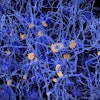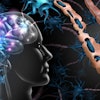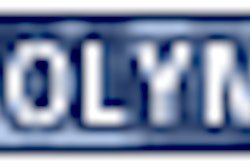Harcourt Health Sciences, St. Louis, 2001, $95
Musculoskeletal MRI represents the fundamentals of skeletal radiology for MRI. As with other books in which Dr. Clyde Helms has been an author, the text is clear and very concise, and covers many subjects.
The target audience is the general radiologist that wants to add a level of subspecialty sophistication to his/her interpretation, or the radiology trainee who would benefit from an overview of musculoskeletal MRI. The text is succinct enough to be covered during the average length of an introductory rotation in musculoskeletal radiology, yet detailed enough to cover most of the essential educational points.
In addition to the traditional organization of the chapters by joints, there are chapters on the basic principles of MRI, marrow imaging, tendons and muscles, peripheral nerves, musculoskeletal infections, arthritis, tumors, and osseous trauma. Text boxes, described by the authors as similar to lecture slides, are used effectively to convey essential information.
The images are of good quality and appear current. There are intermittent non-radiographic line drawings, as well as black and white anatomic drawings, which are used to demonstrate various anatomic subtleties.
Interestingly, the authors have included various MR imaging protocols for each anatomic region. This inclusion is helpful, yet potentially controversial, as numerous protocols exist for various body parts. Those practitioners without convenient access to established protocols, however, should find this information useful.
Unlike most other musculoskeletal texts, the chapters include a brief section on basic technical information, such as how to obtain a quality exam, followed by a short discussion of normal anatomy, but without detailed anatomical images.
The section on the basic principles of musculoskeletal MRI is an effective primer, but needs to be supplemented with additional texts for more detailed information. The text tends to be somewhat dogmatic (e.g. certain MRI methods or certain disease classifications) but also demonstrates the candor in addressing some of the difficulties of MRI, such as characterizing compression fractures as being pathologic or as benign osteoporotic fractures. Although the text is dedicated to MRI, images from comparative modalities would add visual clarity and better definition to the entity being discussed.
Musculoskeletal MRI is, by the authors’ own description, designed for those with short attention spans. It does indeed fill the gap between the large reference texts and lecture notes.
By Dr. Douglas P. BeallAuntMinnie.com contributing writer
February 28, 2002
Dr. Beall is a staff radiologist in the musculoskeletal division, department of radiology at Wilford Hall Medical Center, Lackland Air Force Base, TX. He also is an assistant professor of radiology, department of radiology and nuclear medicine, Uniformed Services Health University in Bethesda, MD.
If you are interested in reviewing a book, let us know at [email protected].
The opinions expressed in this review are those of the author, and do not necessarily reflect the views of AuntMinnie.com
Copyright © 2002 AuntMinnie.com



.fFmgij6Hin.png?auto=compress%2Cformat&fit=crop&h=100&q=70&w=100)



.fFmgij6Hin.png?auto=compress%2Cformat&fit=crop&h=167&q=70&w=250)











